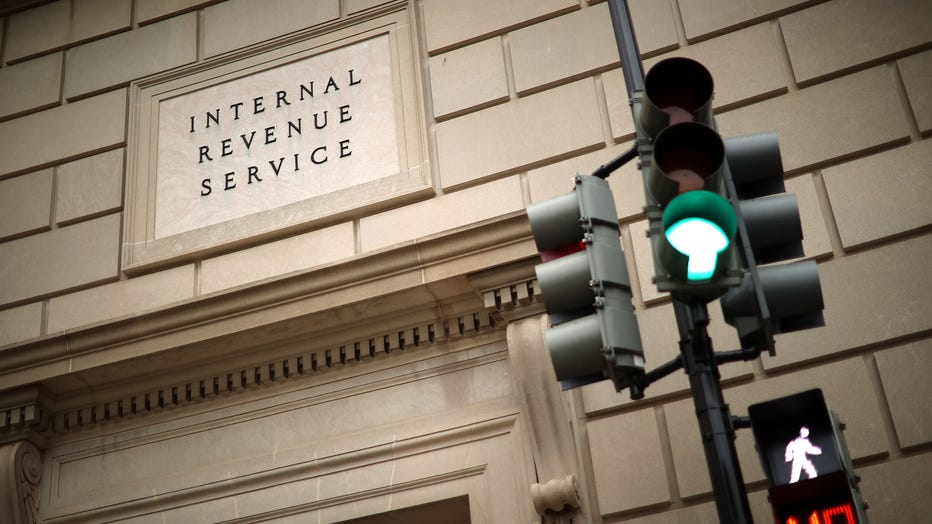3 new tax credits offered to businesses impacted by coronavirus pandemic
WASHINGTON - The Internal Revenue Service is offering three new tax credits to employers impacted by the coronavirus pandemic after stay-at-home orders and lockdowns have shuttered businesses across the country.
RELATED: CoronavirusNOW.com, FOX launches national hub for COVID-19 news and updates
Employee Retention Credit
The employee retention credit is designed to encourage businesses to keep employees on their payroll. The refundable tax credit is 50% of up to $10,000 in wages paid by an eligible employer whose business has been financially impacted by COVID-19, according to the IRS.
The credit is available to all employers regardless of size, including tax-exempt organizations. The two exceptions are state and local governments and their agencies, as well as small businesses who take small business loans, the IRS said.
RELATED: Many laid-off US workers due to coronavirus might make more money with unemployment benefits
To qualify, the employer's business must have been fully or partially suspended by a government order due to COVID-19 during the calendar quarter. The employer's gross receipts must also be below 50% of the comparable quarter in 2019. Once the employer's gross receipts go above 80% of a comparable quarter in 2019, they no longer qualify after the end of that quarter, the IRS said.
Paid Sick Leave Credit and Family Leave Credit
The paid sick leave credit is designed to allow businesses to get a credit for an employee who is unable to work because of a coronavirus quarantine, including telework, or the employee has COVID-19 symptoms and is seeking a medical diagnosis.
The IRS states on its website that those employees are entitled to paid sick leave for up to 10 days — up to 80 hours — at the employee's regular pay rate of up to $511 per day and $5,110 in total.
The employer can also receive credit for employees who are unable to work due to caring for someone with COVID-19, caring for a child because the child's school or childcare establishment is closed, or the paid childcare provider is unavailable due to the virus.
Those employees are entitled to paid sick leave for up to two weeks — up to 80 hours — at 2/3 the employee's regular pay rate, or up to $200 per day and $2,000 in total.
Employees are also entitled to paid family and medical leave equal to 2/3 of the employee's regular pay, up to $200 per day and $10,000 in total. Up to 10 weeks of qualifying leave can be counted towards the family leave credit, the IRS states.
Eligible employers are entitled to receive a credit in the full amount of the required sick leave and family leave — plus related health plan expenses and the employer's share of medicare tax on the leave — for the period of April 1 through Dec. 31, 2020.
The IRS says the refundable credit is applied against certain employment taxes on wages paid to all employees.

The Internal Revenue Service headquarters is pictured in a file image taken on April 27, 2020 in the Federal Triangle section of Washington, D.C. (Photo by Chip Somodevilla/Getty Images)
How employers can receive the three new tax credits
Businesses can be immediately reimbursed for the credit by reducing their required deposits of payroll taxes that have been withheld from employees' wages by the amount of the credit, the IRS states on its website.
Eligible employers will report their total qualified wages and the related health insurance costs for each quarter on their quarterly employment tax returns — or Form 941 — beginning with the second quarter. If the employer's employment tax deposits are not sufficient to cover the credit, the employer may receive an advance payment from the IRS by submitting Form 7200, called "Advance Payment of Employer Credits Due to COVID-19."
Eligible employers can also request an advance of the Employee Retention Credit by submitting Form 7200.
The IRS offers an FAQ regarding both the Employee Retention Credit and the Paid Family Leave and Sick Leave credits on its website.
RELATED: Jobless rate spikes to 14.7%, highest since Great Depression
The U.S. unemployment rate hit 14.7% in April, the highest rate since the Great Depression, as 20.5 million jobs vanished in the worst monthly loss on record.
And while some businesses were beginning to reopen in certain states this week — factories, hotels, restaurants, resorts, sporting venues, movie theaters and many small businesses remained largely closed.
This story was reported from Cincinnati. The Associated Press contributed.


